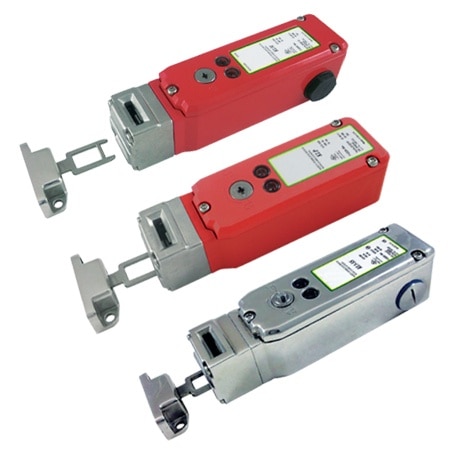Your feedback matters, take a quick surveyWebsite feedback

 Guard locking switches are designed to provide robust position interlock detection for moving guards and provide a lock mechanism to keep the guard closed until the hazard has been removed. They are tongue operated and are designed to fit to the leading edge of sliding or hinged machine guards to provide positively operated switching contacts and provide a tamper resistant key mechanism that is not easily defeatable.
Guard locking switches are designed to provide robust position interlock detection for moving guards and provide a lock mechanism to keep the guard closed until the hazard has been removed. They are tongue operated and are designed to fit to the leading edge of sliding or hinged machine guards to provide positively operated switching contacts and provide a tamper resistant key mechanism that is not easily defeatable.